Femoral Neck Fracture — Hip Replacement in Neck Fracture: treatment in the Best Hospitals of Germany
Treatment prices are regulated by national law of the corresponding countries, but can also include additional hospital coefficients. In order to receive the individual cost calculation, please send us the request and medical records.
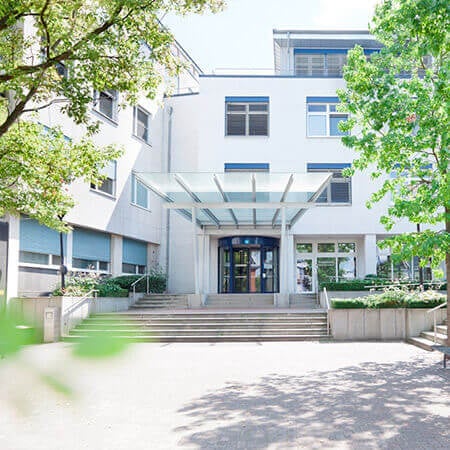
Department of Adult and Pediatric Orthopedics, Traumatology
The Department of Adult and Pediatric Orthopedics, Traumatology is part of the specialized Center for Musculoskeletal Disorders, whose medical team consists of highly qualified orthopedists, traumatologists, and spinal surgeons. The department offers modern diagnostics and treatment of the entire range of musculoskeletal diseases. The department's field of competence includes the treatment of injuries of varying severity. The therapeutic options cover both conservative measures and surgical interventions, which are mainly performed using sparing minimally invasive techniques. The treatment concept is based on the comprehensive approach – from the use of conservative methods to physiotherapeutic procedures the day after surgery.
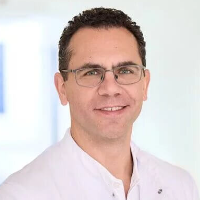


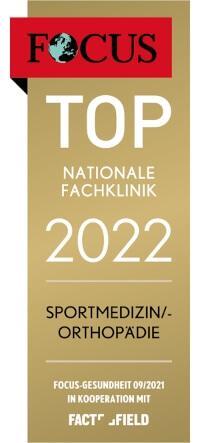
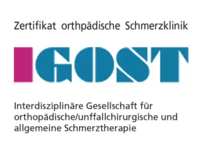
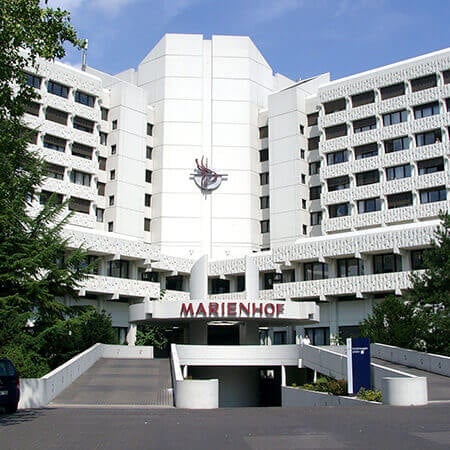
Department of Adult and Pediatric Orthopedics, Traumatology, Foot Surgery
According to the prestigious Focus magazine, the Department of Adult and Pediatric Orthopedics, Traumatology, Foot Surgery ranks among the top German medical facilities specializing in hip surgery! The department offers the full range of high-precision diagnostics and conservative and surgical treatment for diseases of bones, joints, muscles, ligaments, and tendons. One of the department's key areas of clinical practice is large joint arthroplasty. In this area, the department is awarded the prestigious endoCert certificate. The doctors in the department's operating rooms successfully perform knee, hip, and shoulder replacement surgery. Whenever possible, preference is given to minimally invasive joint replacement surgery. An important part of the work of the department's doctors is the treatment of orthopedic diseases and musculoskeletal injuries in children. The specialists at the medical facility also have long experience in helping patients with foot pathologies and deformities, including hallux valgus, hallux rigidus, hammer toes and claw toes, metatarsalgia, etc. The department's doctors have in their arsenal state-of-the-art equipment and modern treatment methods that allow for the achievement of excellent therapeutic results. More than 3,500 inpatients and about 17,000 outpatients are treated at the medical facility every year.
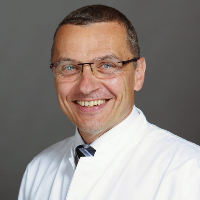

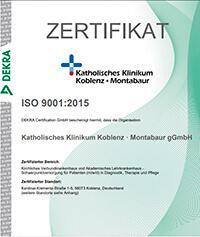

Department of Orthopedics, Traumatology, Spinal Surgery and Foot Surgery
According to the Focus magazine, the Department of Orthopedics, Traumatology, Spinal Surgery and Foot Surgery ranks among the top German medical facilities in treating orthopedic diseases and spinal surgery! The department carries out comprehensive examinations and effectively treats musculoskeletal diseases and injuries. The department has about 130 beds for its patient hospitalization. Doctors annually admit more than 4,000 patients for inpatient treatment. Several thousand surgical interventions of varying complexity are performed on the basis of the medical facility annually. The department offers the services of the certified Maximum Care Joint Replacement Surgery Center (EPZmax) and the certified Trauma Center. In addition, the department's specialists have vast experience in treating spinal and foot pathologies. The main goal of the department's doctors is to restore mobility and eliminate pain. The specialists always prefer an individual approach to each patient and his clinical case.
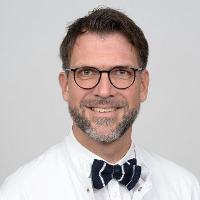


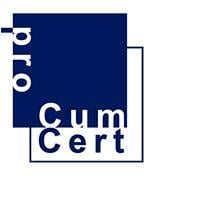

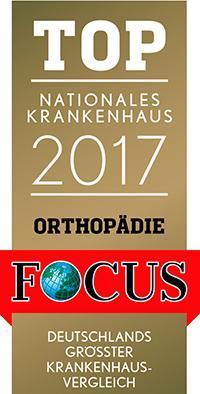
Femoral neck fracture is one of the most common injuries among patients over 70 years old. In 90% of cases, it is caused due to the impaired bone mineralization. Broken bones do not heal well. Without surgery, most of these fractures are fatal within a few months. Hip replacement is one of the best treatment options for the disease. It allows the patients to save life and restore limb function. This operation can be performed in Germany. Booking Health will help you organize your trip.
Content
- What is a femoral neck fracture?
- How dangerous is the femoral neck fracture?
- Why does the femoral neck fracture occur?
- Are femoral fractures common?
- How is the treatment of the disease carried out?
- Which hip replacement is better: total or partial?
- Which fixation method is better: cement or cementless?
- Features of rehabilitation
- Why is it worth undergoing treatment in Germany?
- Where to seek medical help?
What is a femoral neck fracture?
The femoral neck is located in the proximal (closest to the pelvis) part of the femur. The femoral neck fracture is one of the most common injuries in this area.
In 90% of cases, the femur breaks in the proximal area. There are three types of injuries in this group:
- Femoral neck fracture – the most common type that occurs in half of patients with proximal femur fractures.
- Greater trochanter fracture – fracture of the tubercle located near the femoral head (40% of fractures);
- Femoral head fracture – 10% of cases.
The femoral neck fractures can be as follows:
- Subcapital – in the area of transition of the femoral neck to the head.
- Intermediate – in the center of the length of the femoral neck.
- Basal – at the base of the femoral neck.
Femoral neck fracture is usually treated surgically, with hip replacement.
Hip replacement is the substitution of an injured hip joint with an artificial prosthesis.
Cost of hip replacement in femoral neck fracture starts from €9,521. You can find other treatment prices on the Booking Health website.
The best hospitals in Germany are:
- University Hospital Rechts der Isar Munich
- University Hospital of Ludwig Maximilian University of Munich
- University Hospital Ulm
- University Hospital Frankfurt-am-Main
- Vitos Orthopedic Clinic Kassel
How dangerous is the femoral neck fracture?
This is one of the most life-threatening injuries. With the natural course, the disease inevitably leads to the patient's death. With conservative treatment, mortality reaches 80% within 6 months of monitoring.
In 4 out of 5 cases, the fractures are caused by osteoporosis. This is bone demineralization, which occurs due to age-related hormonal changes. The WHO ranks osteoporosis as the fourth most important problem in the world after cancer, cardiovascular disease and diabetes mellitus. It causes numerous fractures, and damage to the femoral neck is not even the most common one. Many people suffering from osteoporosis have fractures of the spine, radius, and humerus.
Conservative treatment is appropriate only for high-energy fractures. Namely, in cases where the bone is broken not due to decreased mineralization, but due to the effect of a very high force. It occurs in young people, usually as a result of a road traffic injury or a fall from a great height, but such hip fractures account for only 10% of cases. In 90% of cases, the bone is broken by elderly people who have concomitant endocrine disorders.
Conservative treatment is unacceptable in older people, since in most cases it leads to death. Only surgical interventions can be used for the treatment. Despite this fact, mortality remains high. According to the WHO information, up to 15% of people die within 6 months of monitoring. Even in developed countries with a high level of medicine, mortality rates in the first 6 months after the femoral neck fracture reach 10%. The maximum mortality is observed among patients with extra-articular fractures of the proximal femur – the number of deaths within 12 months reaches 28%.
Deaths are associated with prolonged immobilization and exacerbation of internal diseases. The immediate cause of death is often myocardial infarction, pulmonary embolism, decompensated heart failure, hepatic or kidney failure.
Among those who recover, not everyone can afford high-quality rehabilitation. Therefore, the outcome of pathology is disability in about a quarter of cases. The patients need constant care. 50% of patients restore mobility, but not completely. Only in 25% of cases is it possible to return the patient to the previous level of physical activity. Much better functional outcomes are observed among those who underwent hip replacement surgery followed by orthopedic rehabilitation.
Why does the femoral neck fracture occur?
There are three main causes of the disease:
- Age (90% of victims are over 70 years old).
- Osteoporosis (detected in 80% of people with broken hips).
- Injuries.
High-energy fractures occur in 10% of cases. This is a consequence of a severe injury. Damage to other bones is also usually detected at the same time.
Stress or low-energy femoral neck fractures occur in 90% of cases. The trigger is usually a fall. At the same time, the impact force is minimal – a healthy femur could easily withstand such a blow, but the fragile, weakened by osteoporosis femoral neck easily breaks. In case of severe osteoporosis, the fracture can occur even without falling – the bone simply cannot support the weight of the person's body.
Are femoral fractures common?
These fractures are very common among elderly people. More and more cases are diagnosed in the world every year. This is associated with an increase in the life expectancy of people.
The main cause of the pathology is osteoporosis. The risk of this disease is higher in women. After 60 years, pathology develops in every third, and after 70 years – in every second person. In men, pathology occurs on average 20 years later.
According to the US information, in 14% of cases, the cause of death of the patient with osteoporosis is the femoral neck fracture. The risk of this injury during life is:
- 15% for women over 50 years.
- 5% for men over 50 years.
- 30% for those who live up to 90 years.
According to the UK information, the number of osteoporotic patients in the country increased by 300,000 people from 2010 to 2020. The proximal femur fracture is diagnosed in 100,000 patients each year. They occupy 20% of all beds in orthopedic hospitals.
How is the treatment of the disease carried out?
Both organ-preserving and hip replacement surgeries can be used for the treatment.
The surgical interventions are performed as early as possible. The patients are often operated on the first day. In case of severe displaced fractures, the operation should be performed no later than 2 days after the incident. Otherwise, the risk of complications increases significantly. When performing the operation, the doctor repositions and fixes bone fragments. If possible, the patient should be activated as soon as possible after the surgery.
Hip replacement can be used both in case of unsuccessful organ-preserving treatment, and as a first choice method. In many patients with osteoporosis, fractures do not heal for months, false joints form, and chronic pain occurs. In such cases, the patient's own joint is removed, and an artificial endoprosthesis is placed in its place.
Which hip replacement is better: total or partial?
For most conditions, doctors perform total hip replacement, but in case of femoral fracture, hip replacement can be either total or partial. The second option implies that the patient's acetabulum is preserved, and doctors implant only the femoral component of the endoprosthesis.
The arguments for partial hip replacement are the following:
- Age over 70.
- Low physical activity.
The benefits of partial hip replacement are the following:
- Shorter and less traumatic surgery.
- Less blood loss.
- Dislocation of the endoprosthesis is less common.
- Reduced cost of treatment.
On the other hand, when using high-quality endoprostheses, the risk of dislocation of the endoprosthesis after total hip replacement is also minimal. It is calculated in tenths of a percent.
The arguments for total hip replacement are the following:
- Age up to 60 years.
- High physical activity.
- High requirements for functional outcomes.
- Concomitant coxarthrosis.
Although total hip replacement surgery takes longer and the cost of treatment is higher, functional outcomes are generally better. For those who plan to lead an active lifestyle after surgery, this is the preferred option.
Which fixation method is better: cement or cementless?
In most diseases, a cementless fixation method is used to replace the hip. The components of the endoprosthesis are pressed into the bone and fixed with screws. They gradually grow into bone tissue and reliably fuse with it.
However, a cement method of fixation is often used in patients with osteoporosis, femoral neck fracture, in elderly and debilitated patients. The components of the prosthesis are "glued" with a special solution. The main reasons for this choice are as follows:
- In osteoporosis, bone tissue does not fuse well.
- Early activation of the patient is necessary.
- Use of cement can accelerate rehabilitation.
According to research information, there is no significant difference in long-term functional outcomes between these two types of fixation. Still, the use of cement has some advantages:
- The patient suffers less pain, not only in the early postoperative period, but also 6 and 12 months after hip replacement.
- It is possible to load the affected leg earlier. Immediately after surgery, a part of the body weight is transferred to it. Maximum loading is allowed after one month, while after cementless fixation it is allowed after 2 months.
- The risk of bone fractures near the prosthesis is reduced.
- The limb support ability is restored faster.
In the long-term period, the function of the limb with different types of fixation will be the same, but in the first 6-12 weeks, it is much better after using the cement fixation method.
Features of rehabilitation
For the patients with the femoral neck fracture, it is very important to start rehabilitation as early as possible. It is necessary to prevent severe, including potentially fatal, complications.
After the operation, the person must first get out of bed no later than 12 hours after the intervention. If the surgery is performed under spinal anesthesia, then activation is possible after 2-4 hours.
Early rehabilitation is more intensive, and in general it is much more important for this category of patients than after hip replacement for another pathology. The task of early rehabilitation measures is to prevent the onset of bedsores, congestion, edema, and impaired blood circulation. Early activation reduces the risk of thromboembolic complications.
Early rehabilitation takes place in the same hospital where hip replacement surgery is performed. The patients perform exercises while lying in bed and standing near it. They use bedside mechanotherapy blocks, frames, cuffs, etc. for training. Other early rehabilitation treatment methods include:
- Physiotherapy – it is often carried out using portable devices at the patient's bed.
- Kinesitherapy.
- Massage.
- Breathing exercises.
The patient is taught to lie, walk, sit down, and get up correctly. Later he is taught to climb up and down stairs, to meet his household and hygienic needs without the help of another person.
In the first two weeks, drugs to prevent complications are also important. The patients receive antibiotics to avoid infections. Anticoagulants and compression stockings (elastic bandaging of the lower limbs) help minimize the risk of thromboembolic complications.
Since the majority of patients with the femoral neck fracture are elderly and senile people, many of them have concomitant internal diseases. Close interdisciplinary collaboration is ensured in German hospitals. To avoid exacerbation and decompensation of chronic diseases, therapists, cardiologists, endocrinologists and other doctors are involved in the treatment process.
Why is it worth undergoing treatment in Germany?
German hospitals employ the best doctors and have state-of-the-art equipment. Even the most complex hip replacement surgeries are performed here. Most patients manage to achieve good functional outcomes. The operation helps the patients to avoid disability and to fully recover from a severe, potentially fatal injury within 3-4 months.
Here are several reasons for you to undergo treatment in one of the German hospitals:
- Sparing surgical interventions through small incisions, with minimal blood loss, low risk of complications.
- Effective early rehabilitation.
- The use of modern endoprostheses, which will serve for decades.
- Reliable results: most patients will not need revision surgery in the future.
- Concomitant treatment of osteoporosis to reduce the risk of recurrent bone fractures (not only hip fractures, but also fractures of the spine, upper limb bones).
In the postoperative period, patients receive high-quality care, supportive, symptomatic, analgesic treatment.
Where to seek medical help?
To undergo hip replacement surgery in one of the best hospitals in Germany, please use the services of Booking Health. On our website, you can get information about the cost of treatment in different German hospitals, compare prices and book a medical care program at an affordable price.
Please contact the Booking Health specialists to undergo treatment in Germany. We will provide the following benefits for you:
- We will choose the best hospital whose doctors specialize in the surgical treatment of the femoral neck fracture.
- We will help you overcome the language barrier, establish communication with the German hospital and your attending physician.
- We will reduce the waiting time for the medical care program and book an appointment with your attending physician on the most suitable dates for you.
- We will reduce the price. The cost of treatment in Germany will be decreased due to the lack of additional coefficients for foreign patients.
- We will take care of all organizational issues: documents for entering the country, transfer from the airport, hotel, interpreter, etc.
- We will prepare a medical care program and translate medical documents into German. You do not have to undergo previously performed diagnostic procedures.
- We will provide communication with the hospital after the completion of treatment in Germany.
- We will organize additional medical examinations, treatment in Germany or rehabilitation, if necessary.
- We will buy medicines in Germany and forward them to your native country.
- We will help you keep in touch with the hospital after treatment in Germany.
Booking Health makes treatment in Germany easier, faster and cheaper. We will fully organize your trip, and you will only have to focus on restoring your health.
Authors:
This article was edited by medical experts, board-certified doctors Dr. Nadezhda Ivanisova, and Dr. Bohdan Mykhalniuk. For the treatment of the conditions referred to in the article, you must consult a doctor; the information in the article is not intended for self-medication!
Our editorial policy, which details our commitment to accuracy and transparency, is available here. Click this link to review our policies.

